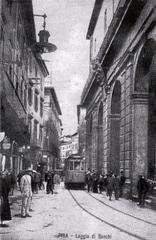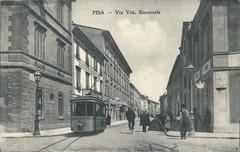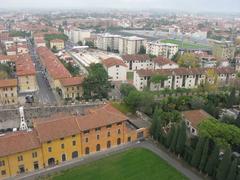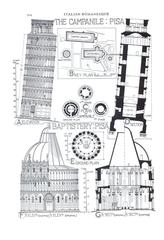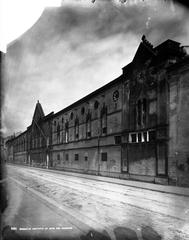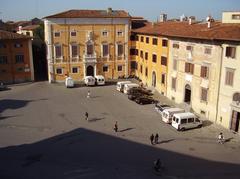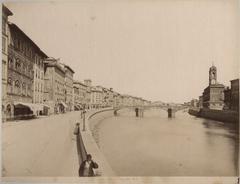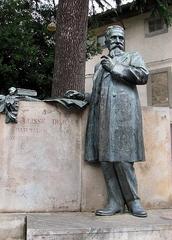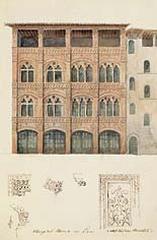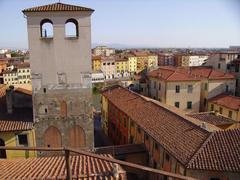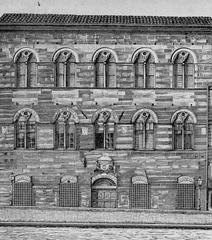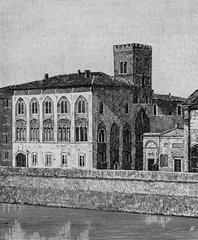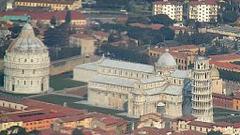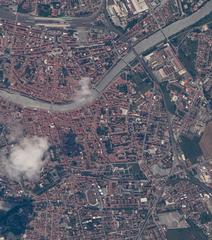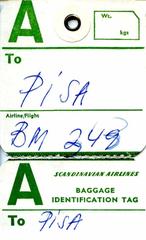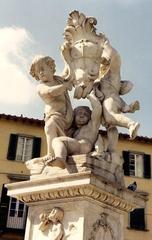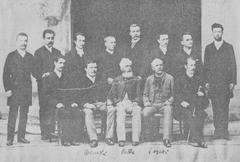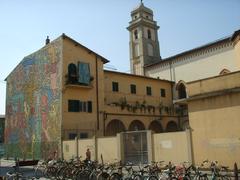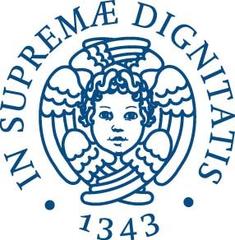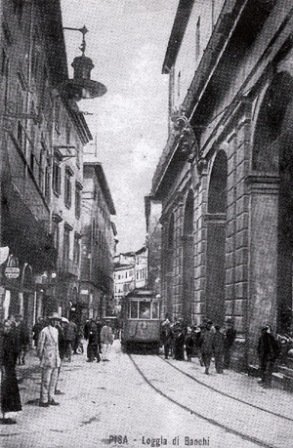
A Complete Visitor Guide to Corso Italia, Pisa, Italy: Hours, Tickets, and Attractions
Date: 14/06/2025
Introduction: Corso Italia at the Heart of Pisa
Corso Italia, situated in the historic city of Pisa, Italy, is the city’s vibrant artery of commerce, culture, and social life. Stretching approximately 700 meters from Piazza Vittorio Emanuele II to the Arno River, this pedestrian-friendly boulevard encapsulates Pisa’s rich medieval heritage alongside its modern identity. Visitors are greeted by elegant neoclassical architecture, lively street scenes, and a diverse array of shops, cafés, and boutiques. Its central location provides easy access to key landmarks, including the Ponte di Mezzo and the world-renowned Piazza dei Miracoli, home to the Leaning Tower of Pisa (Tripcrafters; Bitesize Tourist).
With roots tracing back to Pisa’s medieval and Renaissance periods, Corso Italia was historically a commercial link between the river port and the Tuscan hinterland. Over centuries, it has evolved, balancing the preservation of its historic character with contemporary urban development (Oxford Bibliographies). Today, it remains a hub of local life, hosting events like the Luminara di San Ranieri festival and Gioco del Ponte, reflecting its enduring cultural significance (Italia Mia).
This guide provides all the essential information for visiting Corso Italia: historical insights, practical details on visiting hours, accessibility, transport, safety, and tips for experiencing authentic Pisan culture and seasonal events. Whether you’re drawn by history, cuisine, or shopping, Corso Italia is the gateway to discovering Pisa’s timeless allure (Tripomatic; alittleadrift.com).
Contents
- Historical Evolution of Corso Italia
- Urban Significance and Cityscape
- Essential Visitor Information: Hours, Tickets & Accessibility
- Cultural Atmosphere, Events & Local Customs
- Visiting the Leaning Tower of Pisa: Practical Guide
- Getting Around Corso Italia and Pisa
- Safety Tips for Visitors
- Nearby Attractions & Special Experiences
- Frequently Asked Questions (FAQ)
- Summary and Final Tips
- Sources
Historical Evolution of Corso Italia
Medieval and Renaissance Beginnings
Corso Italia originated as a key commercial thoroughfare during Pisa’s medieval and Renaissance growth. Pisa’s prosperity as a maritime republic between the 11th and 14th centuries spurred the creation of trade routes, with Corso Italia acting as a vital link from the river port to the city’s southern gate (Oxford Bibliographies). The street’s alignment reflects its historic role in connecting religious sites, homes, and markets.
By the Renaissance, artisans and merchants had firmly established their presence along Corso Italia, making it a bustling center for commerce and social interaction.
Modern Transformation
In the 19th and 20th centuries, Corso Italia underwent significant modernization. The street was widened and repaved, medieval structures gave way to neoclassical palazzi, and urban planning balanced historic preservation with contemporary needs (Oxford Bibliographies). Today, the boulevard’s architecture offers a visual journey through centuries of Pisan history.
Urban Significance and Pisa’s Cityscape
Commercial and Social Hub
Corso Italia is the main commercial avenue in Pisa, lined with shops ranging from international brands to artisanal boutiques, as well as cafés, bakeries, and gelaterias (Tripcrafters). Its pedestrian-friendly layout makes it ideal for shopping, dining, and enjoying the city’s vibrant street life.
Architectural and Cultural Highlights
The street is a showcase of Pisa’s architectural diversity, from historic palazzi and churches like Santa Maria del Carmine to contemporary storefronts. University students, street performers, and cultural events infuse Corso Italia with energy, especially during festivals such as Luminara di San Ranieri and Gioco del Ponte (Italia Mia).
Connection to Landmarks
At its northern end, Corso Italia meets the Ponte di Mezzo, linking Pisa’s southern and northern quarters. Crossing the bridge, visitors can easily reach Borgo Stretto and the iconic Piazza dei Miracoli (Bitesize Tourist).
Essential Visitor Information: Hours, Tickets, and Accessibility
Visiting Hours and Ticketing
- Street Access: Corso Italia is a public pedestrian street, open 24/7 with no tickets required.
- Shops: Typically open from 9:00 AM to 8:00 PM, with a midday break (1:00 PM–3:00 PM) in some cases.
- Cafés/Restaurants: Many operate throughout the day and into the evening.
- Historic Sites: Individual sites like Santa Maria del Carmine may have specific opening hours and entry fees; check in advance.
Accessibility
- Pedestrianization: The entire street is pedestrianized and wheelchair accessible, with smooth pavements and benches.
- Facilities: Accessible toilets are near the railway station and commercial centers; tactile paving and audible signals are present in key areas (Tripomatic).
- Transport: Pisa Centrale station is a 10-minute walk; buses stop at Piazza Vittorio Emanuele II.
Safety and Practical Tips
- Safety: Corso Italia is well-lit and regularly patrolled. Pickpocketing is rare but remain vigilant.
- Payments: Credit cards are widely accepted, but carry some cash for small purchases.
- Best Times: Early mornings and late afternoons offer a quieter experience.
Cultural Atmosphere, Events, and Local Customs
Urban Life and Street Culture
Corso Italia pulses with local life—a dynamic mix of university students, professionals, and families alongside tourists. Outdoor cafés and gelaterias buzz with activity, especially during the academic year or festival seasons (alittleadrift.com; visititaly.eu).
Artistic Expression
Street art, public installations, and historic facades celebrate Pisa’s creative spirit. Notably, the Keith Haring “Tuttomondo” mural, located nearby, is a must-see for art lovers (alittleadrift.com).
Café Culture & Culinary Traditions
Corso Italia is dotted with traditional Italian cafés and trattorias serving Tuscan specialties. Gelaterias such as Gelateria De’ Coltelli are favorites for their artisanal flavors (saltinourhair.com). Aperitivo is a local tradition in the early evening, best enjoyed outdoors overlooking the Arno (visititaly.eu).
Shopping
Find a mix of international brands, Italian fashion, and artisanal workshops selling leather goods and ceramics—ideal for unique souvenirs (acasamiaexperience.com).
Annual Events
- Luminara di San Ranieri (June 16): Corso Italia glows with thousands of candles, music, and fireworks (terredipisa.it).
- Palio di San Ranieri (June 17): Rowing regatta and parades celebrate Pisa’s patron saint (italybyevents.com).
- Other Events: Open-air concerts, street festivals, and markets appear throughout the year.
Local Customs
- Pisans greet with “buongiorno” or “buonasera.”
- Afternoon riposo means many businesses close for a midday break (trueitaliani.com).
- Student and religious processions often enliven the street (acasamiaexperience.com).
Visiting the Leaning Tower of Pisa: Hours, Tickets, and Insider Tips
Overview
The Leaning Tower of Pisa, located in Piazza dei Miracoli, is among Italy’s most iconic monuments. It’s a Romanesque bell tower, famous for its tilt and rich 12th-century history.
Visiting Hours
- April–September: 9:00 AM–8:00 PM
- October–March: 10:00 AM–6:00 PM
- Note: Always check the official website for updates.
Ticket Information
- Standard: €20 (includes tower and Cathedral Museum)
- Reduced: €10 (EU citizens 18–25)
- Children under 8: Not permitted for safety
- Booking: Strongly recommend advance online purchase.
Accessibility
- Climbing is unsuitable for those with mobility issues; however, the piazza and Cathedral are wheelchair accessible.
Visitor Tips
- Arrive 15 minutes early.
- Wear comfortable shoes; avoid large bags (lockers provided).
- Early or late visits avoid crowds.
- Photography is permitted; use flash sparingly.
Guided Tours
Guided tours often combine the tower, Cathedral, Baptistery, and Camposanto Monumentale, with options for priority entry and evening visits.
Getting Around Corso Italia and Pisa
Arrival
- Airport: Pisa International Airport (Galileo Galilei) is 2 km from the center; take the PisaMover train to Pisa Centrale (Rome Toolkit).
- Train: Pisa Centrale offers direct access—Corso Italia is just 300 meters away.
- Bus: 26 local routes; tickets via AT Bus app or at the station (Cestee).
Mobility
- Walking: Best way to enjoy Corso Italia.
- Cycling: E-bike and bike-sharing available (National Traveller).
- Hop-On Hop-Off Bus: Operates April–October for sightseeing.
- Car: Avoid driving in the ZTL (Limited Traffic Zone).
Safety Tips for Visitors
- Pisa is generally safe, with low crime and a well-patrolled center (Travel with the Greens).
- Pickpocketing can occur in crowded areas; keep valuables secure (Travel Safe Abroad).
- For emergencies, dial 112. Santa Chiara Hospital is nearby.
- The area is well-lit at night, but standard precautions apply.
- Travel insurance is recommended.
Nearby Attractions & Special Experiences
- Piazza dei Miracoli: Leaning Tower, Cathedral, Baptistery—10 minutes’ walk from Corso Italia.
- Museo dell’Opera del Duomo: Art and history exhibits.
- Seasonal Markets and Events: Pop-up stalls and festivals occur year-round.
- Photo Spots: Ponte di Mezzo and riverfront offer picturesque views.
Frequently Asked Questions (FAQ)
Q: Are tickets required for Corso Italia?
A: No, it’s a public street with free access.
Q: What are typical shop hours?
A: Most open from 9:00/10:00 AM to 8:00 PM; restaurants may stay open later.
Q: Is Corso Italia wheelchair accessible?
A: Yes, the street is flat, pedestrianized, and accessible.
Q: How do I get to Corso Italia from Pisa Airport?
A: Take the PisaMover to Pisa Centrale, then a short walk.
Q: Are guided tours available?
A: Yes, many include Corso Italia and other historic sites.
Q: Is it safe after dark?
A: Yes, though it’s wise to use well-lit, busy areas.
Summary and Final Tips
Corso Italia is more than just Pisa’s shopping street—it’s the city’s lively social and cultural core. Here, history and modern life converge among neoclassical facades, buzzing cafés, festivals, and a welcoming atmosphere. Its location near major landmarks like Piazza dei Miracoli makes it the perfect starting point for exploring Pisa (Oxford Bibliographies; Tripcrafters).
Enjoy unrestricted access to the street, excellent accessibility, and a safe, vibrant environment. Time your visit to coincide with unique events like Luminara di San Ranieri for an unforgettable experience (Italia Mia; Tripomatic). To get the most from your trip, plan ahead for seasonal festivals, explore nearby attractions, and consider guided tours via the Audiala app. Stay updated with travel tips through social media and enjoy all the stories Corso Italia has to offer (Tripomatic; Italia Mia).
Sources and Further Reading
- Corso Italia Pisa: Visiting Hours, Tickets, and Guide to Pisa’s Historic Shopping Street, 2024 (Oxford Bibliographies)
- Corso Italia Pisa: Visiting Hours, Tickets, and Guide to Pisa’s Historic Shopping Street, 2024 (Tripcrafters)
- Discovering Corso Italia in Pisa: Culture, Events, and Visitor Information, 2024 (Italia Mia)
- Explore Corso Italia Pisa: Visiting Hours, Accessibility, Tickets & Safety Guide, 2024 (Tripomatic)
- Cultural Atmosphere, Events, and Local Customs, 2024 (alittleadrift.com)
